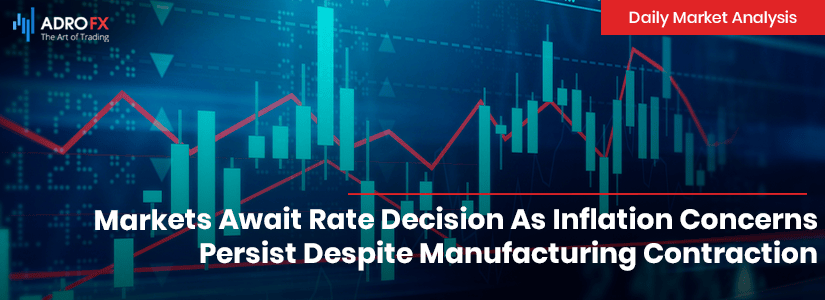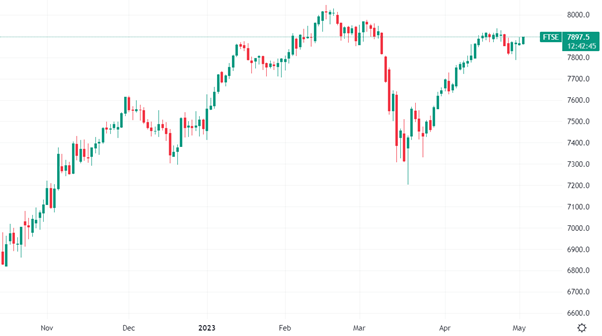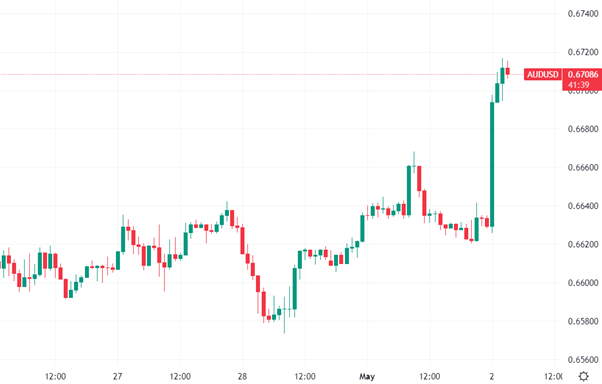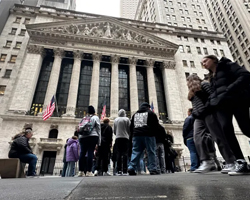Markets Await Rate Decision As Inflation Concerns Persist Despite Manufacturing Contraction | Daily Market Analysis

Key events:
- Australia - RBA Interest Rate Decision (May)
- Australia - RBA Rate Statement
- UK - Manufacturing PMI (Apr)
- Eurozone - CPI (YoY) (Apr)
- USA - JOLTs Job Openings (Mar)
US markets ended the first day of May mostly unchanged as European markets were closed. However, the Nasdaq 100 had its best monthly close in a year, and the S&P 500 almost reached its highest point for the year.

Similarly, European markets performed positively in April with the CAC 40 reaching record highs, and the DAX closing at its highest point in 15 months. Although the FTSE 100 struggled to recover from its March lows, it managed to reverse almost all of its March losses.

Yesterday's US manufacturing ISM figures showed that the sector's economic activity had contracted for the ninth consecutive month, while prices paid had increased. This trend is also evident in recent European manufacturing PMI figures, where economic activity has contracted, but input prices have slowed.
Today's manufacturing PMIs from Spain, Italy, France, and Germany are not expected to provide additional insight into the ECB's possible actions later this week, as they are all anticipated to contract. The April EU flash CPI figures will be the deciding factor between a 25bps move or a 50bps move by the ECB when it meets later this week. Several ECB officials have stated that they are a long way from considering pausing the rate hiking cycle.
If there is a strong core CPI print today, the ECB could take a more aggressive approach, with predictions that the rate could remain at a record high of 5.7%. While headline CPI is expected to increase from 6.9% to 7%, some believe that the ECB could be overplaying its hand, given the sharp decline in PPI, which fell from a high of 43.3% in August 2022 to 13.2% annually, may drop to 5.9% this week. Additionally, monthly readings are starting to show negative results.
After a strong April, European markets are expected to open slightly higher for May, following a quiet session in US markets.

In Asia, the RBA surprised markets by unexpectedly increasing rates by 25bps to 3.85%, despite the headline rate of inflation dropping sharply. The Australian central bank has received criticism for failing to identify the inflation spike, and the pivot may be due to this. The statement was also more hawkish, suggesting that further tightening may be required if inflation remains above target, with services inflation being a concern.
The gold market has been on the rise, with a recent rebound from a significant long-term support level. This bullish outlook can be traced back to March 10th, 2023, when the collapse of Silicon Valley Bank triggered a global financial crisis. The potential recession in 2023 is expected to drive demand for gold further, potentially breaking key levels observed over the past few months.
Although the gold price has reached the important level of $2,075, a correction to lower levels is expected before moving higher. Traders can take advantage of this potential correction by entering long positions in the gold market. Strong support is present around the $1,900 area, where traders can execute long positions with a target of higher levels.

The main economic data to watch today is the release of the April flash HICP figures for the Eurozone. Despite recent individual country data indicating a slight increase in headline inflation and a decrease in core inflation, underlying price pressures are still too high for the ECB to consider halting their rate hikes.
Meanwhile, JPMorgan Chase decided to intervene to resolve the issues surrounding First Republic Bank, which has boosted confidence that recent banking uncertainty is behind us. This is a sentiment echoed by JPMorgan Chase CEO Jamie Dimon and would be well received by nervous markets, especially as yields are on the rise once again and recent economic data suggests that central banks may need to keep raising rates.
Investors will also keep an eye on the Q1 bank lending survey and loan growth data for March, especially to see if the recent banking sector turbulence has affected credit conditions. While the baseline expectation is for the ECB to raise rates by 50bp on Thursday, unexpected and significant tightening in credit conditions could sway the decision in favor of a more dovish approach.









